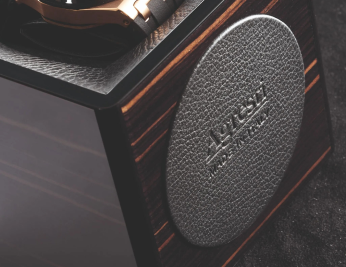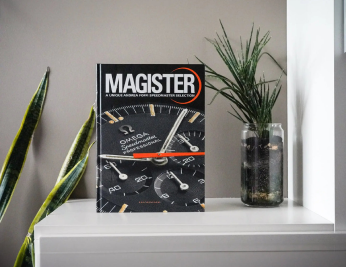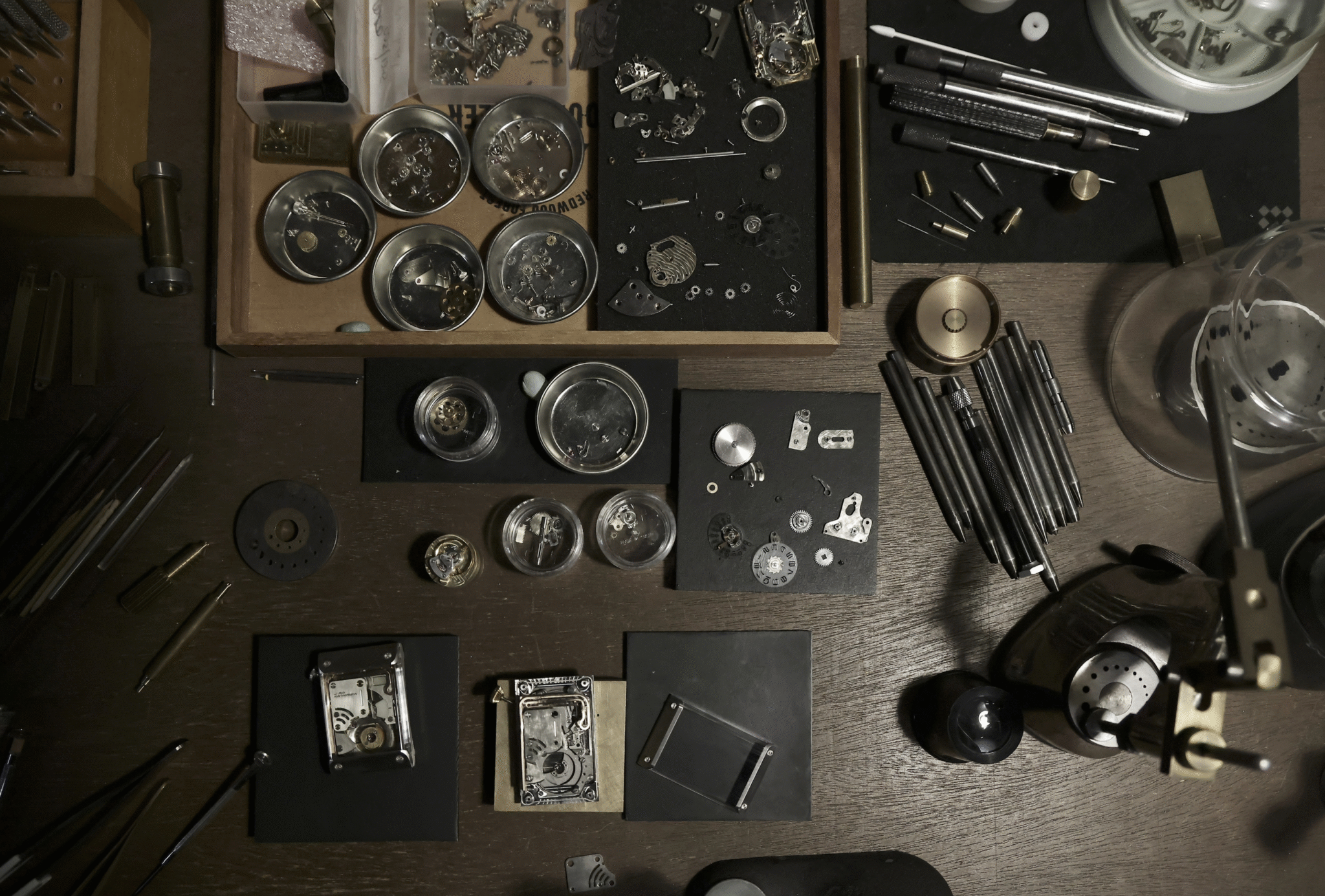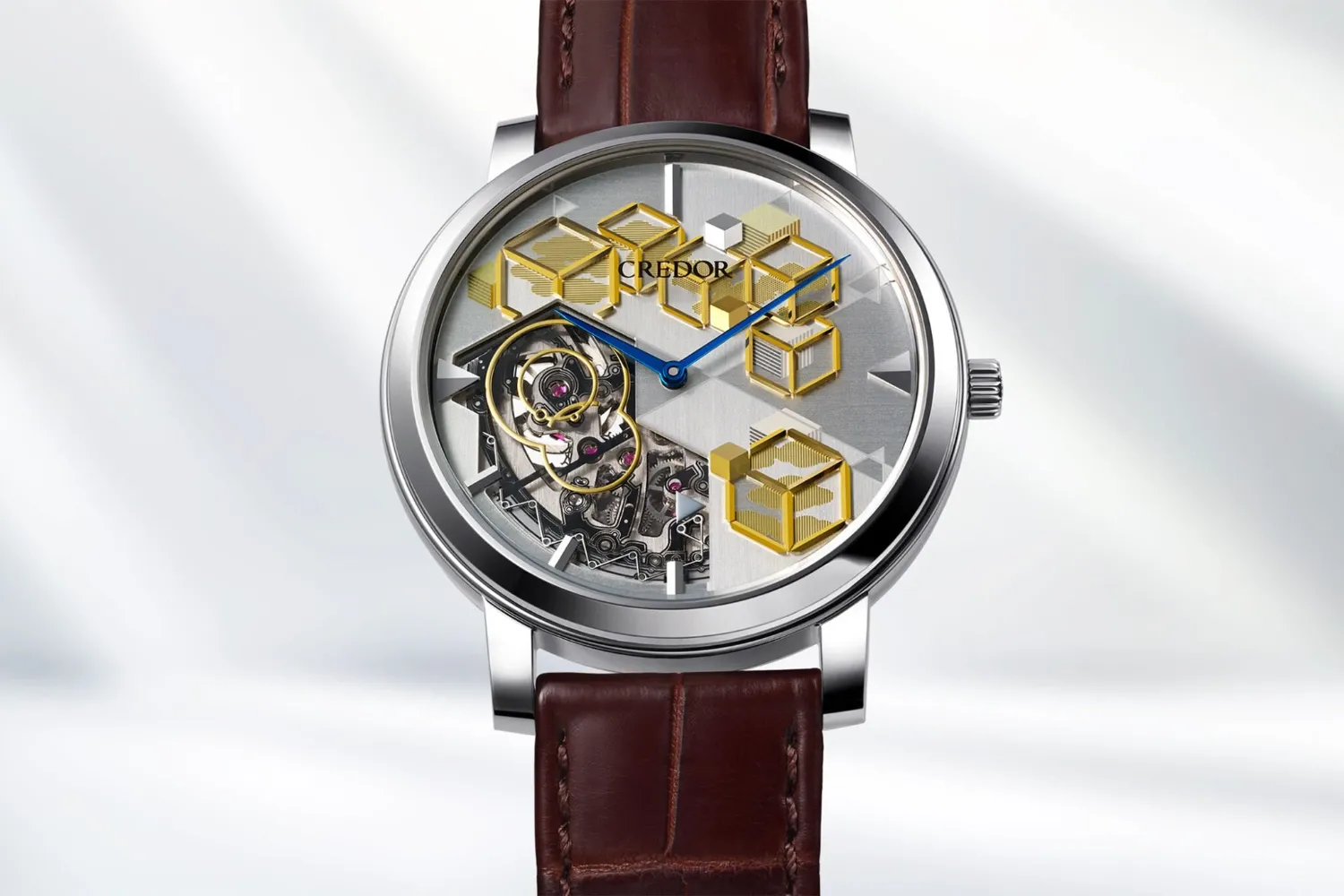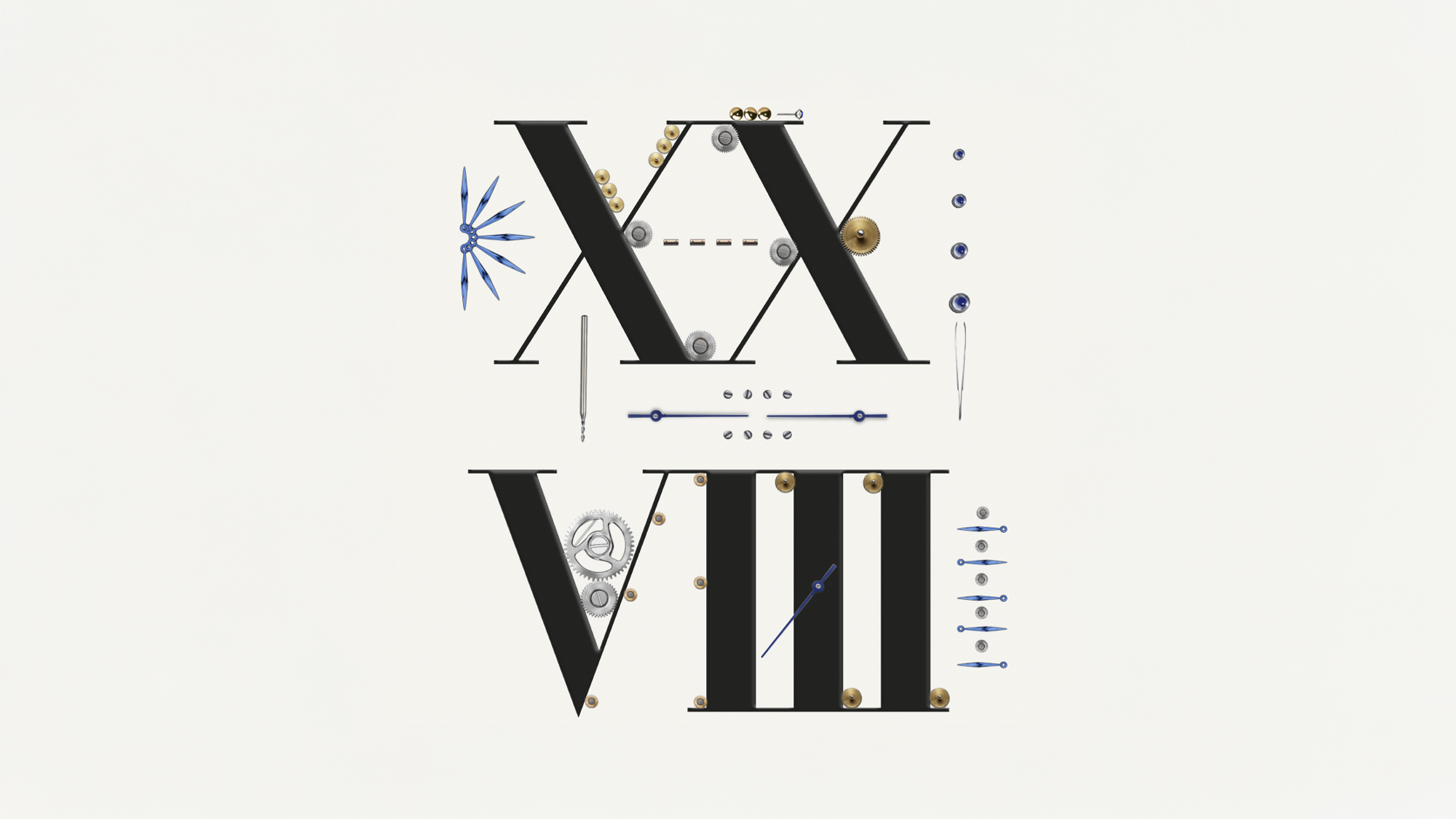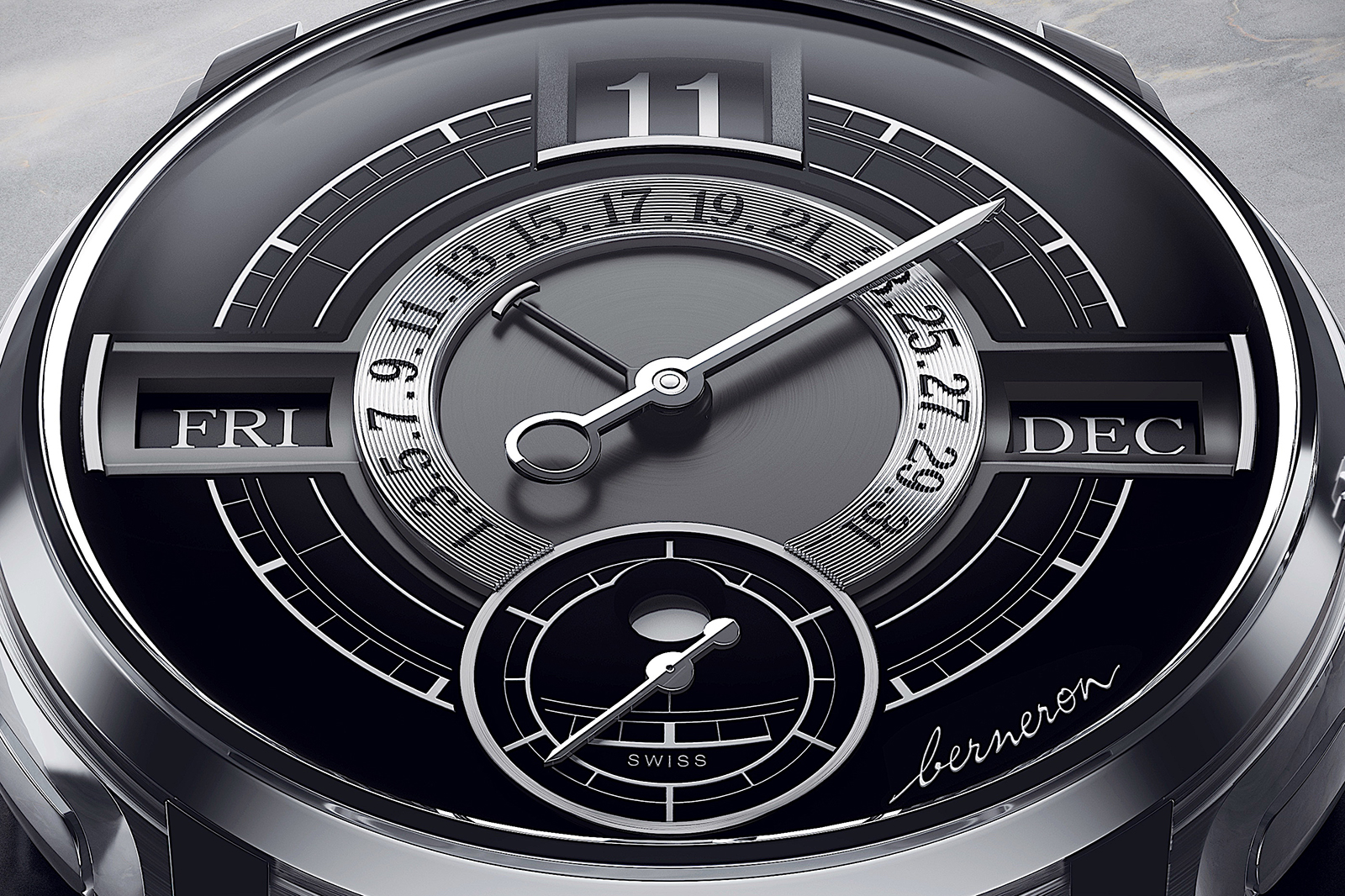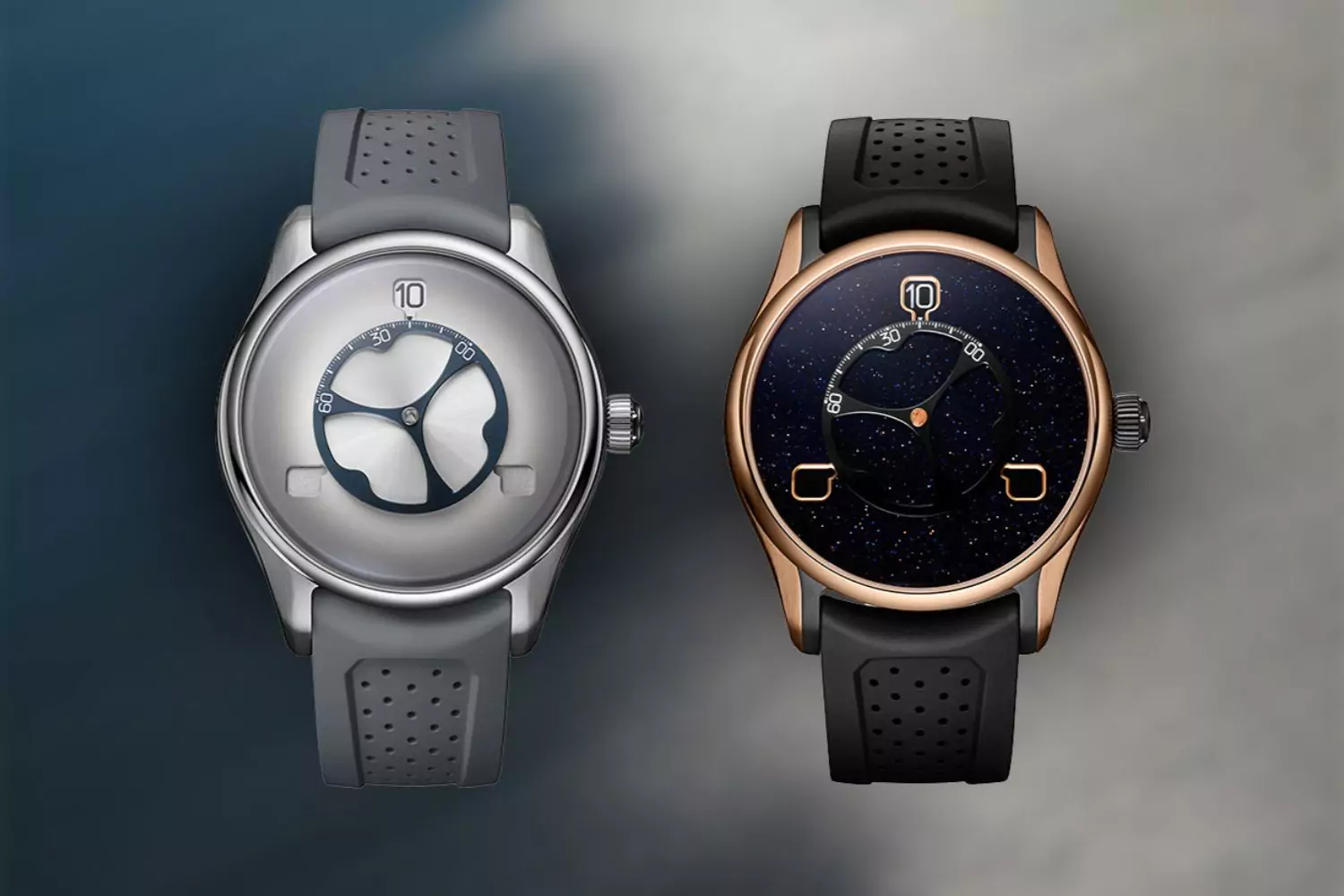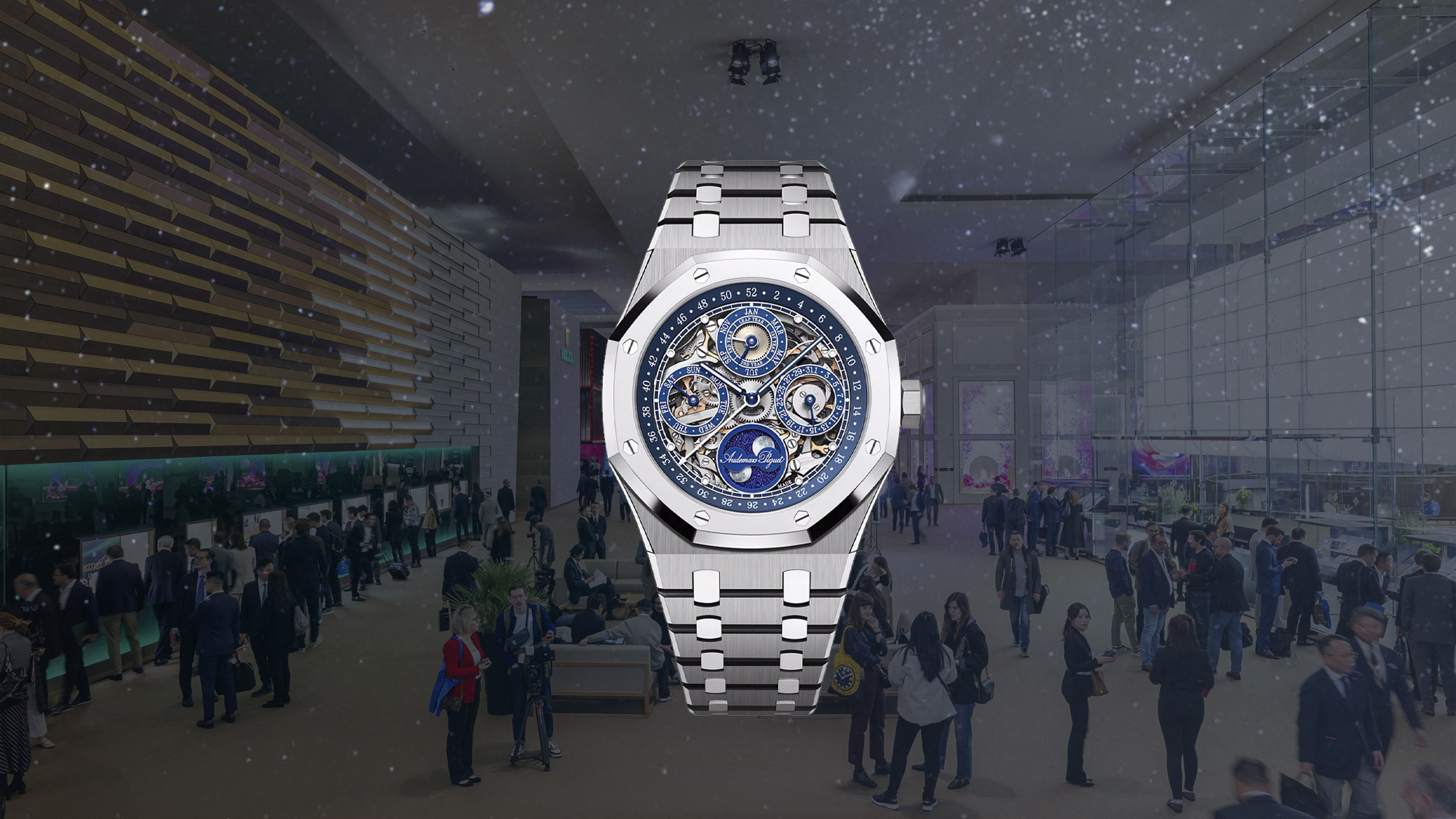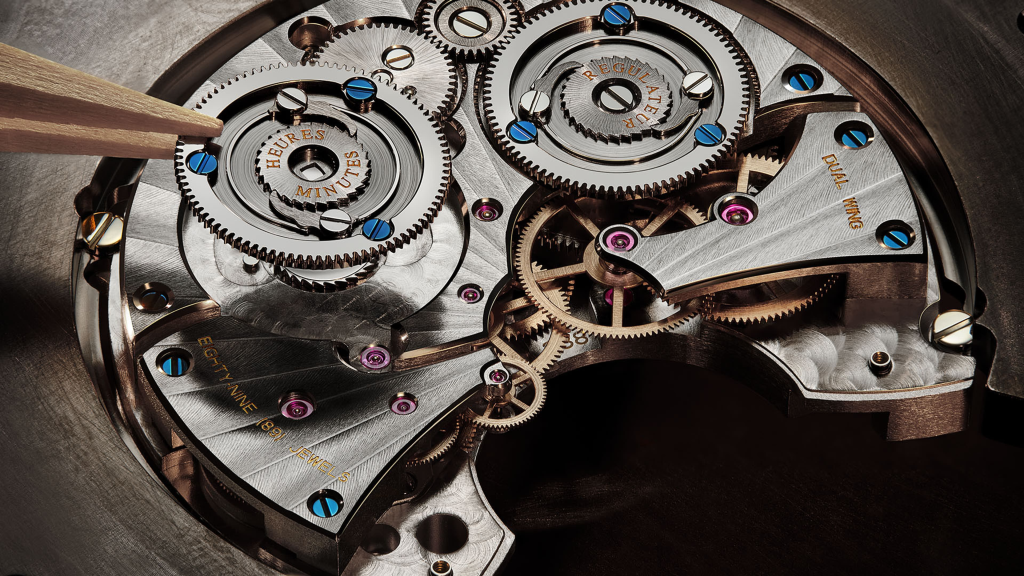When it comes to grand complications, one cannot fail to mention Le Sentier-based maison Jaeger LeCoultre. Once again this year it amazed with a specimen that reinforces the brand’s ability to create true works of art. In April, in fact, during the annual Watches and Wonders event, it unveiled a new masterpiece, the Heliotourbillon Duometre Perpetual, a timepiece limited to only 20 pieces with sublime technique.
The watch is a hybrid of modernity and the past, which has greatly affected this timepiece. It features a perpetual calendar, which means that in addition to the time, it shows the alternation of day and night, the phases of the moon, the day, the month and the current year, with a special feature; in fact, thanks to a patent filed by the brand, if the current year was a leap year, it would be understood by the red coloring of the last number in the date window. In addition to this, as soon as you look at the watch you cannot help but notice the flying tourbillon at nine o’clock, which steals the show from a majestic handcrafted dial with a mix of finishes.
What Does Duometre Mean?
At one and five o’clock, we can see two hands indicating the power reserve; but the question arises, why two? Here comes the genius of Jaeger LeCoultre. In 2007, the “Duometre” collection was born, inspired by the caliber 19/20RMSMI of 1881, which aims to solve a problem related to complications, namely that the latter subtract winding from the barrel in order to be powered, affecting the precision of the mechanical watch.
To solve this, the Le Sentier-based company has thoughtfully placed two barrels and two independent mechanisms inside the timepiece so as not to generate any deficit on the time. One for timekeeping whose power reserve is indicated on the dial at five o’clock by the words “Quantieme,” and another for complications as can be seen at one o’clock by the words “Regulateur.” Thus was born the caliber 388 that gives life to this magnificent timepiece, complementing the characteristic Duometre with a splendid tourbillon that is not at all trivial.
What’s an Heliotourbillon?
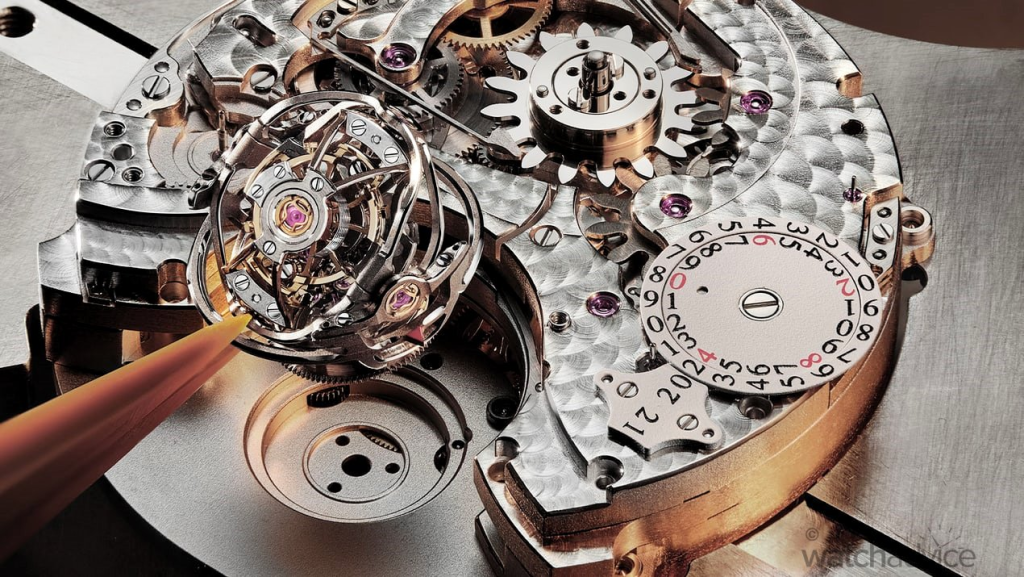
The tourbillon is a device patented by Breguet roughly three centuries ago and is considered one of the most important complications that can be incorporated into a watch. It was created to negate the force of gravity that could cause delays in the rate of the balance, the heart of the watch. In this case, Jaeger LeCoultre has gone decidedly further, creating a tourbillon composed of 163 elements inserted inside three titanium cages, which rotate on three axes and make one complete rotation every sixty seconds, all with a meager weight of 0.7 grams.
In fact, the mechanism does not appear to be connected to any gears, giving the appearance of floating in the air. This was possible thanks to the craftsmanship of the brand’s watchmakers, who with their know-how-just think of the Gyrotourbillon presented in 2004-have raised the bar by accomplishing something that few are still able to do nowadays.
Case and Dial
The call to the past is very much present in this timepiece; in fact, the case echoes the 19th-century pocket watches made by the brand and nicknamed “Savonette,” being reinterpreted in a modern key with a beveled bezel and a rounded glass, creating a strange effect, as if the watch lacked the top glass.
The seemingly mundane case is actually composed of 34 separate components with screwed, not soldered, lugs and a mix of finishes that create a fascinating play of light. At nine o’clock, moreover, when viewed from the side, it allows a glimpse of the magnificent tourbillon thanks to a sapphire crystal placed along the entire side.
Looking at the dial, however, one cannot help but notice the alternating finishes. First of all, a sandblasting emerges, which also appears on the surface of the rose gold bridge that bounds the dial from the skeletonized area, where the tourbillon is admired suspended over a starry sky. A vinyl finish distinguishes the interiors of the three hour markers, while a soleil treatment completes the dial as a whole.

Through the visible case back, all the craftsmanship of Le Sentier’s watchmakers can be further perceived, who create a Côtes de Genève sunburst finish on Caliber 388, which radiates along all the bridges of the plate, creating a magnificent play of light.
Final Thoughts
What can I say, one could talk for hours about the beauty of the caliber and engineering behind this timepiece, I limit myself for which in arguing that with this watch Jaeger LeCoultre has once again confirmed to us the artistry and craftsmanship that pervades in its workshops, constantly aiming for the highest standards of quality and precision, continuing to be one of the leading brands in this industry.
Visit our YouTube channel to experience the best of the watchmaking world firsthand.
For real-time updates, follow us on Instagram.

